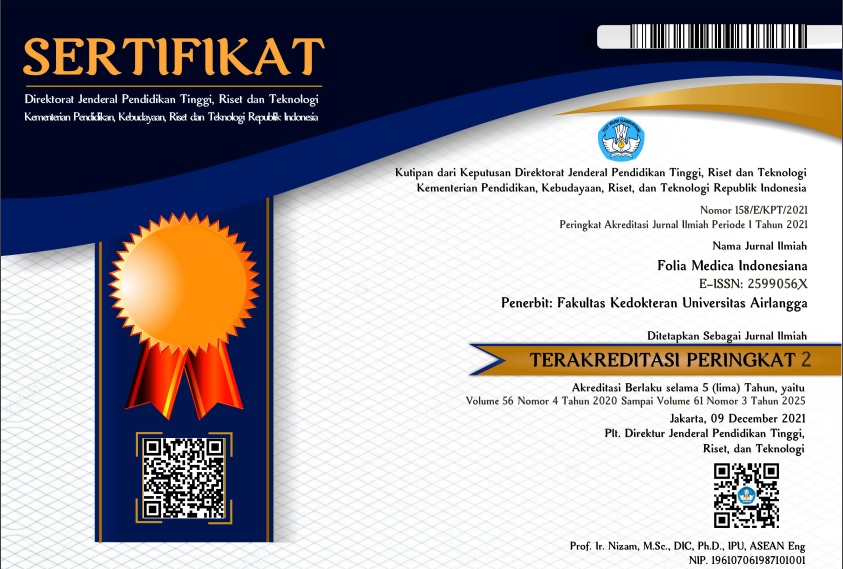ORCID ID
Fikri Rizaldi: https://orcid.org/0000-0002-4588-6584, Doddy M Soebadi: https://orcid.org/0000-0003-0982-4383
Abstract
Obstructive uropathy is an obstruction of urinary passage which may lead to anuria, a condition where urine production is less than 50 to 100 ml in 24 hours. The varying etiologies and underlying pathophysiology among different cases based on different demographics can make it difficult for physicians to decide the proper management. Therefore, we aimed to evaluate the clinical profile and management of anuria patients in Dr. Soetomo General Academic Hospital over a four-year period. This was a descriptive study with a retrospective approach evaluating all patients with anuria admitted from January 2016 to December 2019. Patient data taken from the medical record were presented descriptively. A total of 176 patients were obtained. Only 161 patients were included. Most of the patients were female (n=100, 62.11%) aged 51 to 60 years old (n=63, 39.1%). Postrenal obstruction due to urinary stone was the most frequent etiology (n=86, 53.4%). Consequently, some patients developed hydronephrosis, which was mostly dominated by the bilateral (n=130, 80.8%) and severe types (n=75, 46.6%). A total of 129 patients (80.1%) underwent hemodialysis. Most of the patients were treated with definitive treatment (n=46, 38.7%). Normalization of renal function mostly occurred in patients who underwent percutaneous nephrostomy (PNS) before giving a definitive treatment.
Keywords
Obstructive anuria, obstructive uropathy, obstructive anuria management, human & disease
First Page
239
Last Page
244
DOI
10.20473/fmi.v57i3.26700
Publication Date
9-5-2021
Recommended Citation
Wicaksono, Fandy; Rizaldi, Fikri; and Soebadi, Doddy M
(2021)
"Characteristics of Obstructive Anuria Patients in a Tertiary Hospital in East Java, Indonesia,"
Folia Medica Indonesiana: Vol. 57:
No.
3, Article 11.
DOI: 10.20473/fmi.v57i3.26700
Available at:
https://scholarly.unair.ac.id/fk-fmi/vol57/iss3/11






